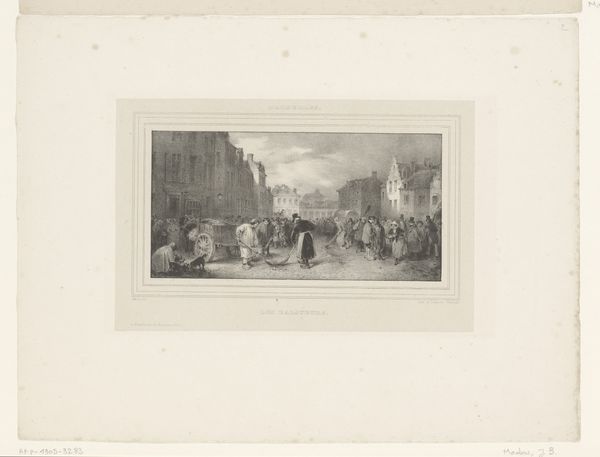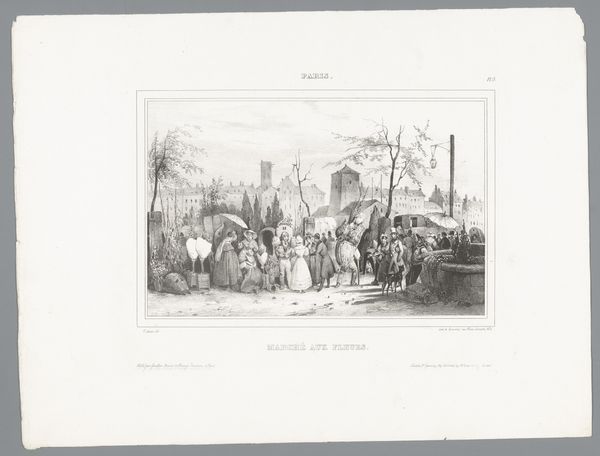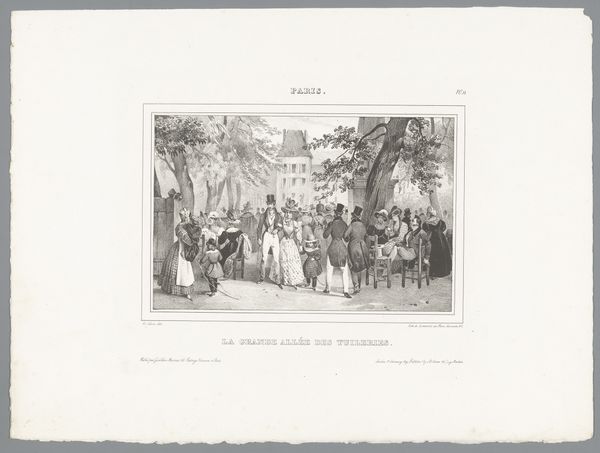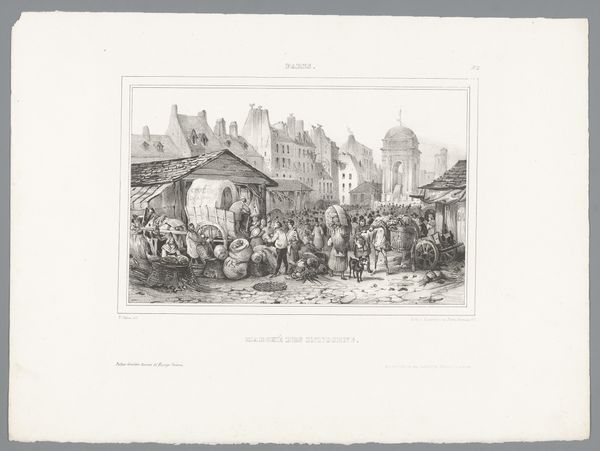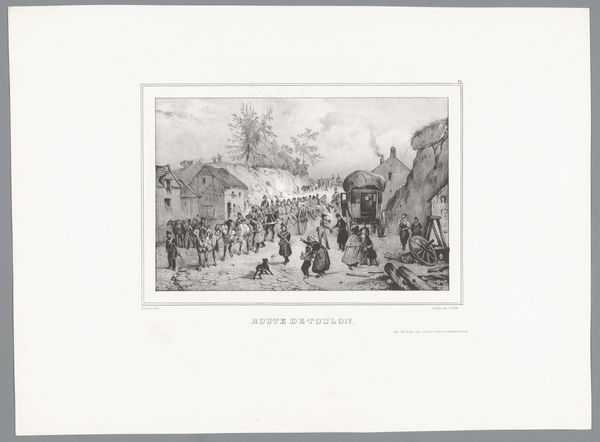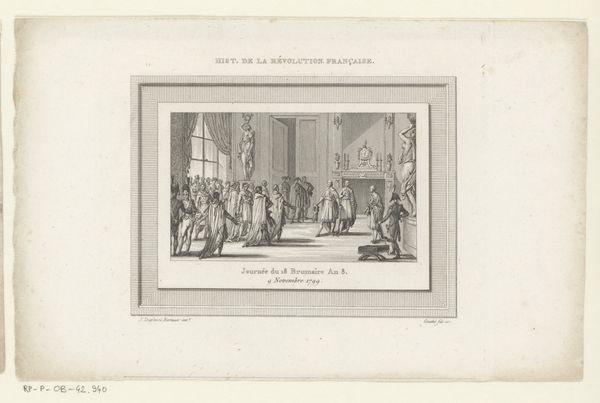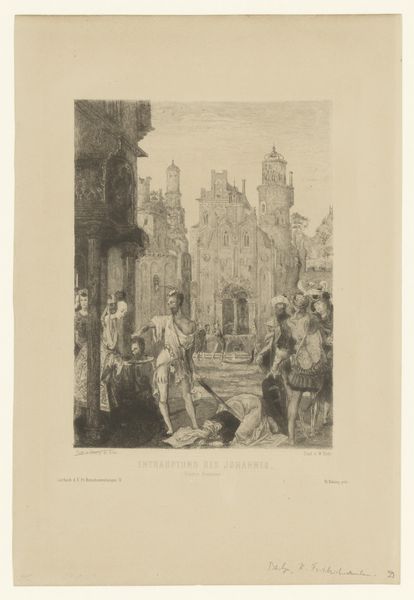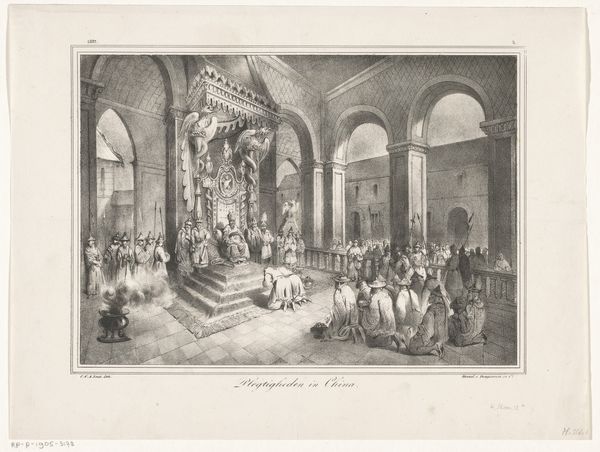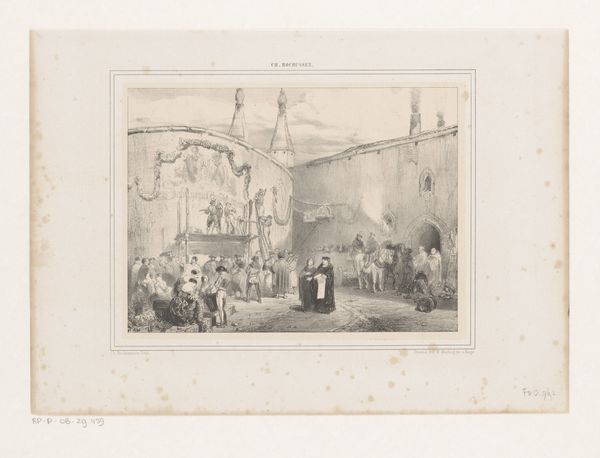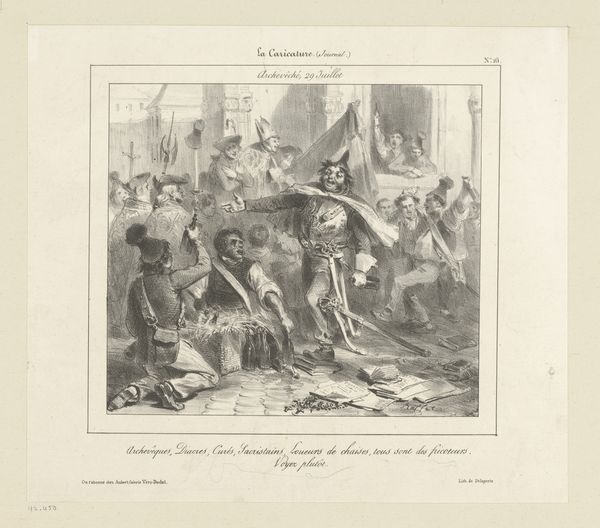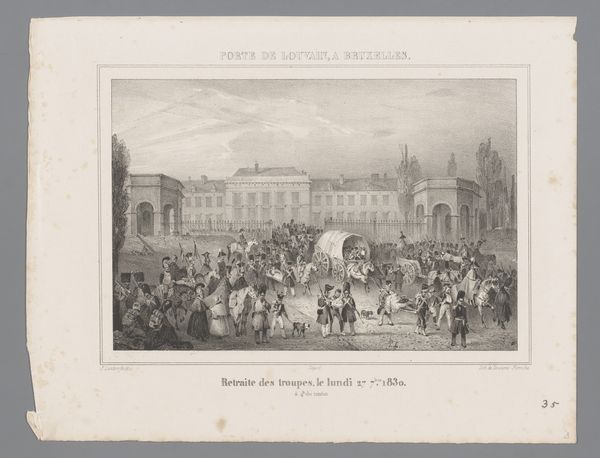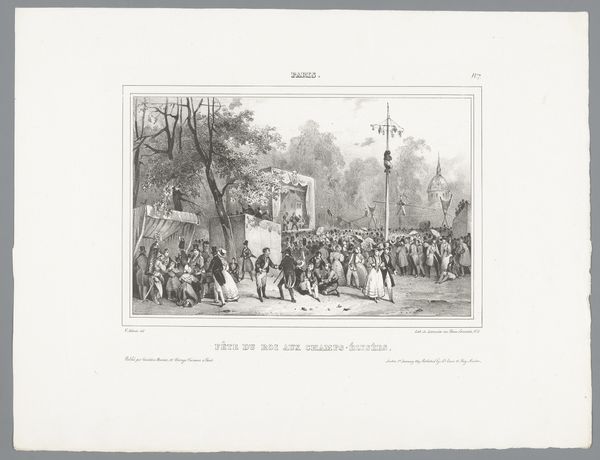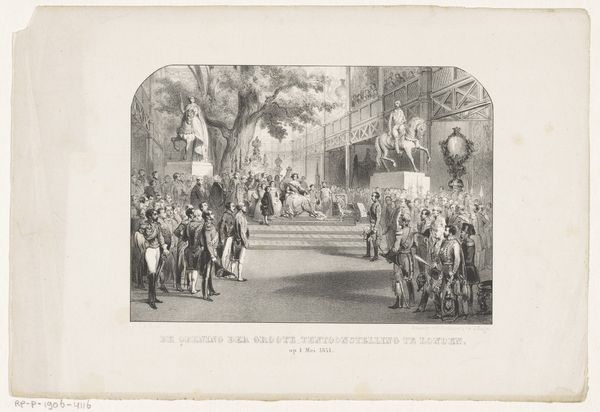
print, engraving
#
narrative-art
# print
#
romanticism
#
cityscape
#
engraving
Dimensions: height 275 mm, width 363 mm
Copyright: Rijks Museum: Open Domain
Editor: This engraving, "Sacramentsprocessie" by Victor Adam, was created in 1829. The procession gives it a solemn mood, but I am struck by how the architecture in the background dominates the entire scene. What’s your take on it? Curator: This piece encapsulates a crucial moment in Parisian, and indeed French, history. The scale of the architecture suggests the enduring power of the Church, doesn't it? Editor: It does. Curator: What’s intriguing is the revival of public religious displays after the Revolution. Engravings like this helped construct a vision of social order, presenting religious practice as part of an ideal cityscape. How do you think this image functions for its intended audience? Editor: It’s interesting you say that because the way the figures are dressed seems to recall an older time. Is it like they were trying to show a kind of...continuity? Curator: Precisely! This artwork served as a kind of propaganda. Consider the year: 1829. The Bourbon Restoration was clinging to power. The print reinforces their authority by aligning it with both religious tradition and Parisian identity. Editor: So, this wasn’t just a picture; it was making a statement. I never thought of prints being so politically charged. Curator: Visual media plays a huge role in shaping opinions! Remember that prints were widely circulated and influential forms of media at the time. It is something that has been often overlooked by people, because the actual work involved is sometimes missed or underestimated. Editor: Right, it is something that easily goes unnoticed when the focus goes primarily into big-scale paintings and sculptures. I’ll definitely look at prints with a different perspective from now on!
Comments
No comments
Be the first to comment and join the conversation on the ultimate creative platform.
